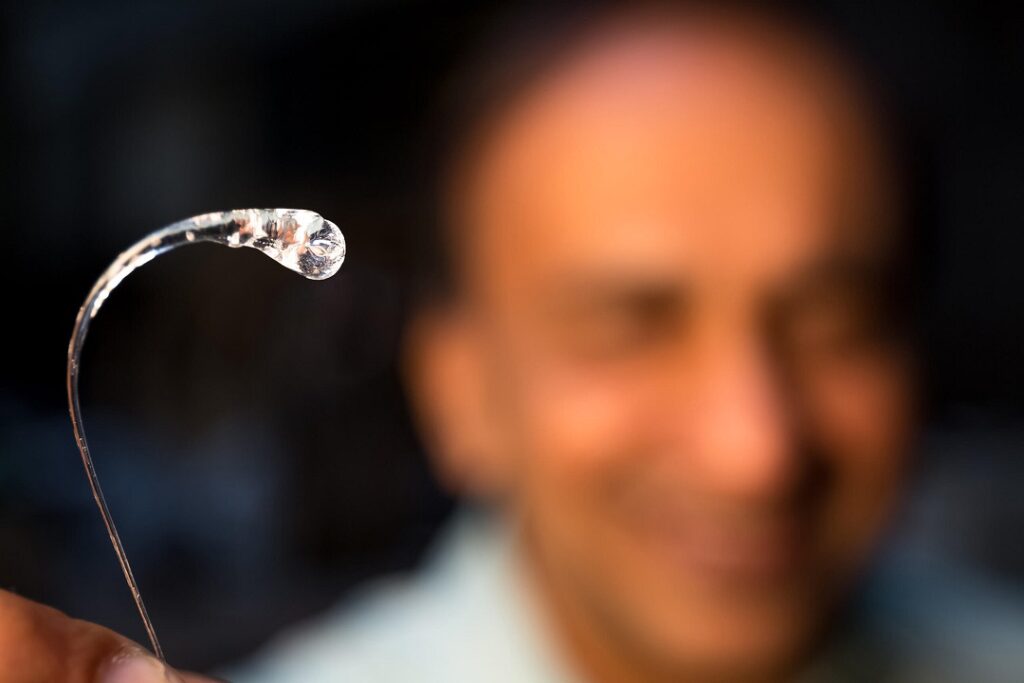Prince Rupert’s drops, fascinating glass objects with unique properties, have captivated scientists and enthusiasts for centuries. These tadpole-shaped drops, formed by dripping molten glass into cold water, exhibit a remarkable contrast between their resilient bulbous heads and their fragile tails. In this article, we delve into the history, properties, scientific significance, and applications of Prince Rupert’s drops, exploring their intriguing behavior and shedding light on the principles of fracture science.
1. Historical Background:
Prince Rupert’s drops owe their name to Prince Rupert of the Rhine, a 17th-century German-British nobleman and soldier. While their origins may predate Prince Rupert, he is credited with popularizing these drops by presenting them to King Charles II. This sparked scientific interest in their unique properties and behavior.
2. Formation and Unique Structure:
Prince Rupert’s drops are created by dripping molten glass into cold water. The rapid cooling of the outer layers creates compressive stress, while the interior cools and solidifies more slowly, resulting in residual tensile stress. This process leads to the formation of tadpole-shaped drops, with the head being under immense compressive stress and the tail under residual tensile stress.
3. Extraordinary Fracture Behavior:
The most intriguing aspect of Prince Rupert’s drops is their fracture behavior. The bulbous head is exceptionally strong and can resist hammer blows or even withstand being hit with a bullet, seemingly unscathed. However, the seemingly invincible drops shatter explosively if the fragile tail is disturbed or broken.
The unique fracture behavior of Prince Rupert’s drops can be attributed to the release of internal stress. When the tail is disrupted, such as by scratching or snapping it off, the stress is suddenly released, causing the rapid propagation of fractures throughout the drop. This phenomenon is known as the “exploding glass” effect, as the drop disintegrates into fine glass powder.
4. Fracture Science and Stress Distribution:
The behavior of Prince Rupert’s drops can be explained by the principles of fracture science and stress distribution. The shape of the drop and the varying cooling rates during its formation result in different stress distributions. The head experiences compressive stress, which makes it incredibly strong and resistant to external forces. On the other hand, the tail bears residual tensile stress, which renders it extremely fragile.
When the fragile tail is disrupted, it acts as a stress concentrator, causing the fractures to rapidly propagate throughout the drop. This occurs due to the release of stored elastic energy, as the internal stress is relieved. The sudden release of energy leads to the explosive shattering of the drop, transforming it into glass powder.
5. Applications and Scientific Research:
Prince Rupert’s drops have found applications beyond their intriguing nature. They have been used in scientific research to study material strength, fracture mechanics, and stress distribution. The drops provide valuable insights into the behavior of glass under stress and can help in the development of impact-resistant materials.
The unique fracture behavior of Prince Rupert’s drops has also been employed in the development of bulletproof glass and other impact-resistant materials. By understanding the principles behind their fracture, researchers can design structures and materials that can withstand high-energy impacts without catastrophic failure.
6. Cultural Significance and Artistic Applications:
Prince Rupert’s drops have not only fascinated scientists but have also captured the imagination of artists and craftsmen. Their unique shape and fracture behavior have inspired artistic creations and sculptures. The drops have become symbols of resilience, fragility, and the delicate balance between strength and vulnerability.
Artists have utilized Prince Rupert’s drops to create stunning glass art pieces that showcase their intricate shapes and optical properties. The drops’ ability to withstand external forces while being vulnerable to the slightest disruption has been interpreted as a metaphor for human resilience in the face of challenges.
7. Future Directions and Conclusion
Despite their long history, Prince Rupert’s drops continue to intrigue researchers and hold potential for further exploration. Future investigations may delve deeper into their fracture mechanisms, stress distribution, and applications in various fields, including materials science and engineering. Advanced imaging techniques and computational modeling can provide valuable insights into the internal structure and stress distribution within the drops.
In conclusion, Prince Rupert’s drops stand as remarkable examples of glass artistry and scientific marvels. Their robust heads and delicate tails showcase the delicate balance between strength and fragility. By understanding their fracture behavior and stress distribution, scientists can uncover valuable insights into material strength and develop innovative solutions for impact resistance. These drops, with their rich history, intriguing properties, and diverse applications, will undoubtedly continue to captivate the imagination of scientists, artists, and enthusiasts for generations to come.











